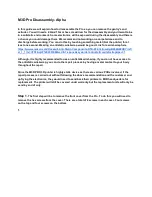
Memory
6-14
For minimum acceptable job buffering performance, the hard disk should be able to
read and write files at a sustained rate of 600Kb/sec. The Lexmark hard disk option
supports this requirement.
Some advantages of job buffering include:
•
The printer accepts print jobs more quickly.
•
The printer accepts print jobs from all ports as long as the disk is not filled.
•
The printer continues to print even after the host computer, network
connection, or printer server goes down.
•
Buffered jobs print when power is restored after a printer power loss.
•
The printer manages print jobs from multiple sources.
Keep in mind that job buffering may also:
•
Slow system performance.
•
Restrict the amount of memory available on the disk for other uses.
•
Increase the time required for a printer reset or recovery after a power loss.
•
Reprint jobs after a power-on reset (POR).
Creating a Partition
Before job buffering is enabled for a port, you must allocate a portion of the disk for job
buffering functions. The minimum size for a job buffering partition is 10 percent of the
disk storage space. When a new partition is created, the entire disk is formatted and
all resources previously downloaded to the disk are lost.
Once a partition is defined, this disk space is reserved for job buffering.
Enabling Job Buffering
Once a partition is allocated, job buffering to a disk may be enabled for each active
link port. You can enable job buffering from the operator panel menus, if available, or
through MarkVision Professional. You cannot enable a port before the partition is
allocated. When buffering is enabled from the printer operator panel, a power-on reset
(POR) automatically occurs. If buffering is enabled through MarkVision Professional,
you must perform a full power-on reset before job buffering can occur.
















































